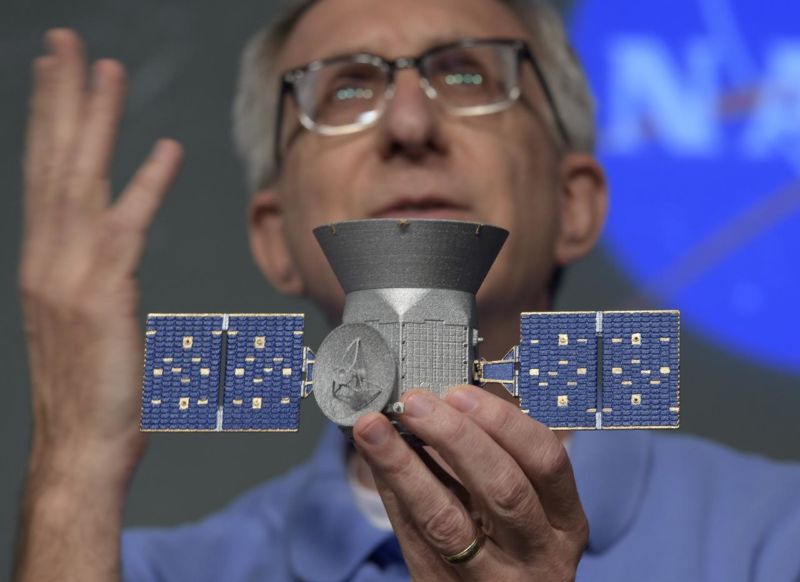SpaceX to launch a small planet hunter for NASA on Monday
Ars Technica » Scientific Method 2018-04-16

Enlarge / Jeff Volosin, TESS project manager at NASA’s Goddard Space Flight Center, holds a model of the Transiting Exoplanet Survey Satellite. (credit: NASA)
The wildly successful Kepler Space Telescope was designed to observe faint stars, and monitor them for brief dips in brightness that would indicate the passage of an object—most commonly a planet. However, the Kepler telescope was only able to resolve stars only in one specific area of space, about 0.28 percent of the entire sky, so it spied few nearby exoplanets.
It is often the brighter stars that are of more interest to astronomers seeking to find exoplanets, because they are typically closer to the Sun, and therefore more readily observable with other instruments. Therefore the follow-up instrument to Kepler, the Transiting Exoplanet Survey Satellite (TESS), has been designed to observe the entire sky, and optimized to find stars 30 to 100 times brighter than those Kepler could study.
After Kepler validated the search for exoplanets by finding thousands of them through careful measurements of periodically dimming stars, astronomers have confidence that TESS and its four cameras will be able to monitor the brightness of more than 200,000 stars during a two-year mission and find thousands of exoplanets. Of these, astronomers estimate that the telescope should find about 500 Earth-sized, and "Super Earth" planets, a fair number of which should be within the habitable zones of their parent stars.